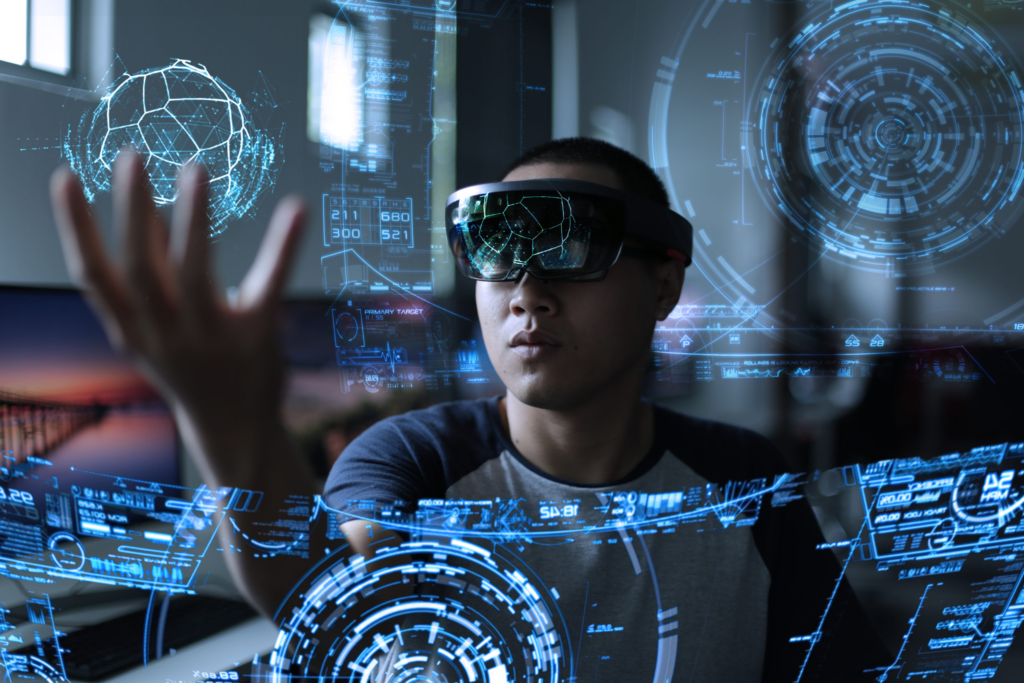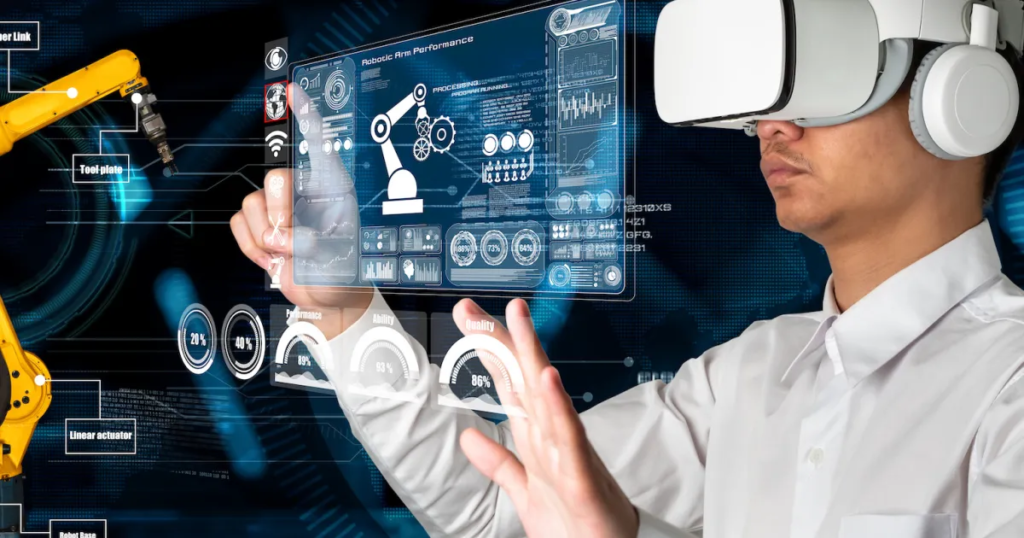Virtual Reality (VR) and Augmented Reality (AR) are two of the most exciting technologies in today’s digital age. VR is a computer-generated environment that allows users to explore and interact with 3D worlds. Users wear headsets that make them feel like they are in a completely different place. On the other hand, AR overlays digital content (like images, sounds, and texts) onto the real world through devices like smartphones, tablets, or smart glasses.
Both technologies are reshaping how people play games, shop, learn, and even receive medical care. These innovations are pushing boundaries and creating new possibilities across industries.
How VR Is Revolutionizing the Gaming World
Gaming is the most popular area for VR use. Gamers love the deep, immersive experiences that VR offers. With VR, players are not just controlling the game—they are living inside it.

Titles like Half-Life: Alyx, Beat Saber, and The Walking Dead: Saints & Sinners are considered major milestones in VR gaming. These games use full-body motion tracking and 360-degree visuals to make players feel like they are actually inside the game.
Companies like Oculus (owned by Meta), HTC Vive, and Sony PlayStation VR are leading the charge by offering high-quality headsets and accessories. The development of wireless headsets and improved graphics has made VR gaming more accessible and enjoyable for casual players too.
According to Statista, the global VR gaming market is expected to reach $53 billion by 2028, proving the growing demand and interest in this space.
Augmented Reality in Mobile and Console Games
Unlike VR, AR does not require a headset. A smartphone or tablet is enough to enjoy an AR experience. One of the most successful AR games to date is Pokémon GO, launched in 2016. This game made billions by letting players catch virtual Pokémon in real-world locations.
Other AR-based games, such as Minecraft Earth and Harry Potter: Wizards Unite, also showed how combining the physical world with digital content could attract millions of users.
AR gaming focuses on merging reality with fantasy. This makes it more social and safer to use in everyday situations. New AR glasses from companies like Apple (Vision Pro) and Snapchat (Spectacles) promise to bring gaming into your daily life in exciting and subtle ways.
Beyond Gaming: Real-World Uses of VR and AR
While gaming is still the biggest market for VR and AR, other industries are also using this technology in powerful ways.
Healthcare: VR is being used to train doctors in surgery, allowing them to practice in risk-free virtual environments. Patients with PTSD or anxiety disorders benefit from VR therapy that simulates real-life situations in a controlled setting.

Education: AR and VR are turning classrooms into interactive learning spaces. Students can now take virtual field trips to Mars, explore the human body in 3D, or learn about ancient civilizations by walking through historical reconstructions. Read more about VR in education.
Retail: Companies like IKEA use AR apps to help customers see how furniture will look in their homes before buying. Makeup brands like L’Oréal offer virtual try-on features so shoppers can see how products look on their faces.
Real Estate: Realtors use VR tours to show homes to clients remotely, helping them explore properties from anywhere in the world. This technology became especially useful during the COVID-19 pandemic.
Military and Defense: Soldiers are trained using VR simulations that prepare them for real combat situations without any danger. This makes training more effective and safer.
Challenges and Limitations
Despite the rapid growth, VR and AR still face several challenges. One of the biggest hurdles is cost. High-end VR headsets and AR glasses are expensive, limiting who can access them.
Another issue is motion sickness, which affects some users when they move around in a virtual environment. Developers are working on improving the technology to reduce these effects.
Also, the lack of high-quality content can slow down the adoption of VR and AR. For these technologies to reach their full potential, developers need to create more meaningful and engaging experiences beyond entertainment.
The Future of VR and AR
As technology becomes more advanced, VR and AR will become even more realistic and useful. The arrival of 5G networks will allow smoother and faster streaming of AR and VR content on mobile devices.
Tech giants like Apple, Google, Meta, and Microsoft are investing billions in VR and AR, aiming to make these tools as common as smartphones. Apple’s Vision Pro, launched in 2024, is seen as a big leap forward in mixed reality, combining AR and VR features into one headset.
Experts believe that in the next 10 years, we will use AR glasses like we use phones today. VR may become a regular tool in schools, offices, and even in therapy sessions.
Final Thoughts
Virtual Reality and Augmented Reality are no longer just buzzwords. They are becoming a real part of our lives—changing how we play, learn, shop, and connect with the world. While challenges still exist, the future of VR and AR is full of promise.
Whether you’re a gamer, student, teacher, doctor, or simply curious, VR and AR have something to offer. These technologies are opening up new worlds of possibilities, and the journey has only just begun.
For more on how technology is reshaping industries, you can explore TechCrunch’s AR/VR section.
Also Read – Discover the Future: Connected Devices Changing Homes and Workplaces





